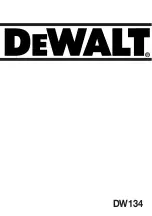
12.1.
17
Mixers - replaceable RA models
5. Commissioning
16
No special cleaning agent is required for cleaning stainless steel parts.
Use alcohol or steam in the event of a disinfection.
The flange housing with the thread connection is disassembled and cleaned once a year.
Use a scrubbing or synthetic brush to clean the stainless steel parts.
7 .
M a i n t e n a n c e a n d r e p a i r
GUTH mixers are maintenance-free. The agitator shaft, pivoting sash propeller and the connection
side of the mixer must be cleaned or rinsed with water after use. It is then recommended to grease
the agitator shaft with suitable grease.
NOTICE
If cleaning agents or cleaning tools are used other than those recommended or if the device is
mishandled, the guarantee for the resulting damage will lapse!
ATTENTION
• Cleaning agents that contain sodium hydroxide or other high alkaline agents with chlorine, bro-
mine, iodine or fluorine additions, potassium oxide, chlorine-based products, ammonium com-
pounds, quaternary hydrochloric or hydrofluoric acid must not be used, as these agents cor-
rode the stainless steel surface.
ATTENTION
• Please pay attention to the instructions on the safety data sheets of the cleaning agent manu-
facturer. The instructions must be adhered to. The customer must provide evidence that the
cleaning agent has been applied correctly.
WARNING
• All work on the stationary machine must be carried out by qualified specialist personnel when
it is switched off and secured to prevent it from restarting again.
Check if the machine is free of voltage!
ATTENTION
• We would like to point out that spare parts and accessories that we have supplied are not
checked and approved by us either. The installation and/or the use of these products may
therefore under certain circumstances have a negative effect on the design properties of the
mixer.
CAUTION
When carrying out cleaning and maintenance work, electrical components such as motors,
switches, etc. must not be sprayed directly!
NOTICE
Maintenance intervals:
Practical maintenance intervals can only be determined empirically by the user as they depend
on the conditions of operation involving, for instance, hours of use per day, switching fre-
quency, type and temperature of the product, type and temperature of the cleaning agent,
surrounding conditions.





































